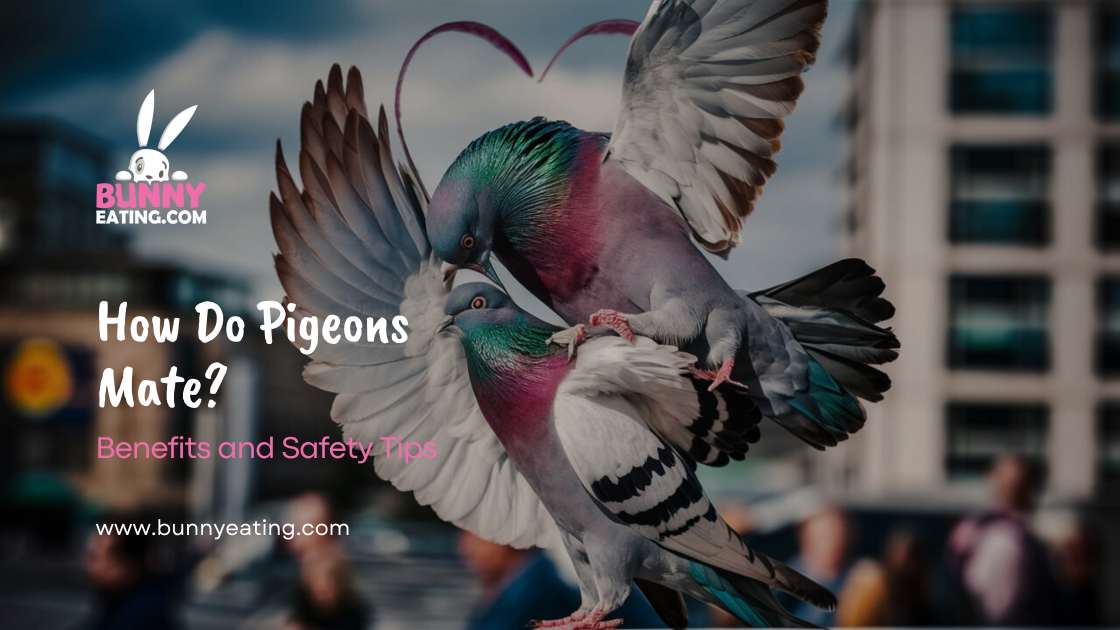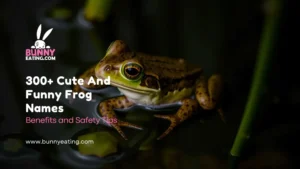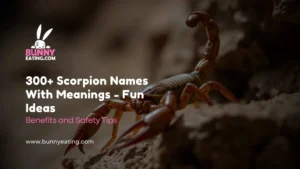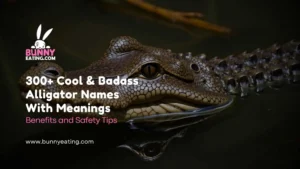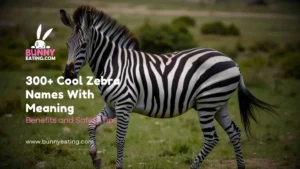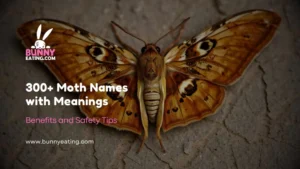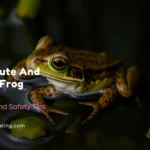Pigeons, the birds we often see in cities, have some interesting behaviours, especially when it comes to mating and raising their young. These birds are adaptable and resilient, living in all sorts of environments from busy cities to quiet countryside. By learning about their mating habits, we can understand more about how they live and survive.
For those who love birds or breed pigeons, understanding how pigeons mate is important. It helps ensure they get the right care and conditions they need to be healthy and reproduce successfully. This knowledge also helps people who manage pigeon populations in cities, keeping a balance between the birds and the urban environment. How Do Pigeons Mate?
Pigeons have fascinating courtship rituals, and they often form strong pairs to raise their chicks together. They build simple nests, take turns incubating eggs, and work hard to feed their young. By diving into the world of pigeon mating, we can appreciate these birds even more and learn a lot about their way of life.
Understanding Pigeon Mating for Bird
For bird enthusiasts and pigeon breeders, delving into the intricacies of pigeon mating is more than just an academic exercise. It’s a crucial aspect of responsible avian care and conservation. By understanding the breeding habits of pigeons, we gain valuable insights into their needs, behaviours, and overall well-being. This knowledge is essential for creating optimal conditions for these birds, whether in captivity or in urban environments where they often coexist with humans.
Moreover, comprehending the reproductive cycle of pigeons can have far-reaching implications. For pigeon breeders, this knowledge is vital for successful pigeon breeding programs. It allows them to optimize breeding conditions, ensure the health of their birds, and maintain genetic diversity. For urban planners and wildlife managers, understanding pigeon mating behaviours can inform strategies for managing pigeon populations in cities, balancing the needs of these birds with urban development and public health concerns.
Pigeon Courtship Rituals
Pre-mating Behaviors: How Pigeons Attract Mates (Cooing, Bowing, and Strutting)
The world of pigeon mating is filled with elaborate courtship rituals that would put even the most romantic human gestures to shame. These rituals are a crucial part of the breeding behaviour of pigeons, serving multiple purposes in the mating process. They help pigeons attract potential mates, establish pair bonds, and prepare for the challenges of reproduction and chick-rearing.
One of the most distinctive aspects of pigeon courtship is their vocalizations, particularly cooing. Male pigeons produce a range of soft, throaty coos that serve as both advertisements of their fitness and sweet nothings to their potential mates. These coos vary in pitch, rhythm, and duration, creating a unique auditory display that can be quite captivating to both female pigeons and human observers alike.
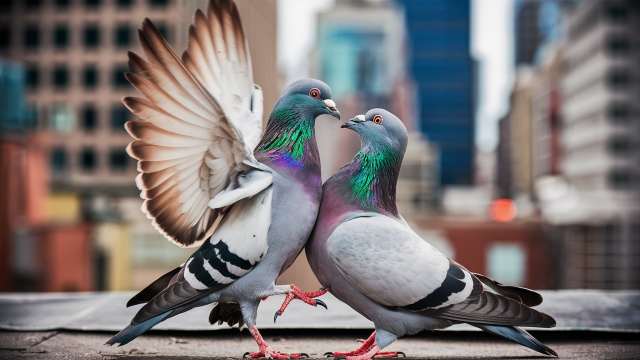
Male and Female Roles: Differences in Behavior During Courtship
In the dance of pigeon romance, both males and females play crucial roles, each with their own set of behaviours and responsibilities. Male pigeons typically take the lead in courtship, initiating many of the mating dance rituals. They engage in elaborate displays of strutting in birds, puffing out their chests, fanning their tails, and prancing about in a show of vigour and health. This strutting behaviour is often accompanied by a characteristic bowing behaviour, where the male lowers his head and coos softly to the female.
Female pigeons, while often appearing more reserved, are far from passive participants in this mating ritual. They carefully observe and evaluate the displays of potential mates, looking for signs of health, vigour, and genetic fitness. A female pigeon may encourage a favoured male by responding with subtle movements or vocalizations of her own. This interplay between male displays and female choice is a crucial aspect of pigeon mating, ensuring that the strongest and most compatible pairs form.
Pair Bonding: Formation of Monogamous Pairs and Its Significance
One of the most fascinating aspects of pigeon mating behaviour is their tendency towards avian monogamy. While not always mating for life as some myths suggest, pigeons do form strong pair bonds that can last for extended periods, often over multiple breeding seasons. This pair-bonding process is crucial for the success of pigeon pairs in raising their young.
The formation of these bonds typically begins during the courtship phase and is reinforced through various behaviours. Paired pigeons often engage in mutual preening, a behaviour where they groom each other’s feathers. This not only helps maintain their plumage but also strengthens their social bond. Paired pigeons will also often be seen sitting close together, cooing softly to each other, and defending their chosen territory as a team. This strong pair bond is essential for the challenges that lie ahead in the breeding process.
The Mating Process
Nesting: Choosing a Nesting Site and Preparing It for Mating
Once a pair bond has been established, pigeons turn their attention to the crucial task of nest building. The process of nest site selection is a joint effort between the male and female, though the male often takes the lead in proposing potential sites. Pigeons are adaptable creatures and can build nests in a variety of locations, from natural ledges on cliffs to man-made structures in urban environments.
The construction of pigeon nests is a fascinating process to observe. Both members of the pair contribute to building the nest, though the male typically gathers most of the materials. Pigeon nests are relatively simple structures, often consisting of a loose platform of twigs, grass, and other plant materials. As the nest takes shape, the birds will work together to arrange and rearrange the materials, creating a sturdy base for their future eggs.
The “Cloacal Kiss”: Description of the Actual Mating Process
The actual pigeon mating process, known scientifically as copulation, is a brief but crucial moment in the reproductive cycle. Unlike mammals, birds do not have external genitalia. Instead, both males and females have a single opening called the cloaca, which serves for both reproduction and waste elimination. The mating act itself, often referred to as the “cloacal kiss,” is a quick and efficient process.
During mating, the male pigeon mounts the female from behind. Both birds then twist their tails to the side, allowing their cloacas to make contact. This brief contact, lasting only a few seconds, is sufficient for the transfer of sperm from the male to the female. While it may seem quick to human observers, this efficient process is the result of millions of years of evolutionary adaptation, perfectly suited to the pigeon’s reproductive needs.
Frequency: How Often Pigeons Mate and Under What Conditions
The breeding frequency of pigeons can vary depending on several factors, including environmental conditions, food availability, and the health of the birds. In optimal conditions, pigeons are capable of breeding year-round, though they typically have peak breeding seasons in spring and fall. A healthy pair of pigeons can potentially produce several clutches of eggs in a single year.
Mating itself occurs multiple times during the breeding cycle. Pigeons often mate several times in the days leading up to egg-laying, ensuring successful fertilization. They may also mate again shortly after the eggs are laid, potentially preparing for the next clutch. This frequent mating behaviour helps ensure reproductive success and maintains the strong bond between the mated pair.
Post-mating Behavior
Egg-laying: Timeline from Mating to Egg-laying
After successful mating, the egg-laying process begins. Typically, a female pigeon will lay two eggs, though occasionally only one or rarely three. The timeline from mating to egg-laying is relatively short, usually taking about 7-10 days. During this time, the female’s body undergoes significant changes to prepare for egg production and laying.
The eggs are usually laid about 44 hours apart, with the female spending increasing amounts of time on the nest as laying approaches. This gradual increase in nest attendance helps protect the developing eggs and prepares the parents for the intensive incubation period to come. The timing of egg-laying is crucial, as it allows the parents to coordinate their efforts in caring for the eggs and, later, the chicks.
Incubation: Shared Responsibilities Between Male and Female Pigeons
The incubation period for pigeon eggs typically lasts about 17-19 days. During this time, both the male and female take turns incubating the eggs, showcasing the cooperative nature of pigeon parenting. This shared responsibility ensures that the eggs are kept at a constant temperature and are protected from predators and environmental threats.
The division of labour during incubation is quite remarkable. Typically, the female will incubate the eggs from late afternoon through the night until mid-morning. The male then takes over, incubating from mid-morning until late afternoon. This schedule allows each parent to leave the nest to feed and attend to their own needs while ensuring constant care for the developing eggs.
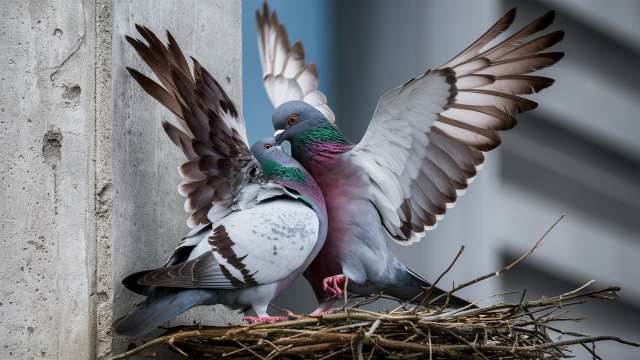
Raising Chicks: Care of the Young and Feeding Routines
Once the eggs hatch, the real work begins for pigeon parents. Pigeon chick care is an intensive process that requires dedication from both parents. Newly hatched chicks are altricial, meaning they are born blind, featherless, and entirely dependent on their parents for food and warmth. The parents work tirelessly to keep the chicks warm and well-fed during their rapid growth period.
One of the most fascinating aspects of pigeon chick care is the production of “crop milk.” Both male and female pigeons produce this nutrient-rich secretion in their crops (a pouch-like enlargement of the oesophagus). For the first few days of life, this is the sole food source for the chicks. As the chicks grow, the parents gradually introduce regurgitated seeds and other solid foods into their diet. This unique feeding routine continues until the chicks are ready to fledge, usually around 4-6 weeks of age.
Factors Affecting Mating Success
Environment: How Surroundings Influence Mating Behavior
The breeding environment plays a crucial role in the mating success of pigeons. In urban settings, pigeons have adapted to use buildings, bridges, and other structures as nesting sites. However, the urban environment also presents challenges, such as limited food sources and increased predation risks. In contrast, rural pigeons may have access to more natural nesting sites and food sources but face different challenges such as agricultural pesticides and predators.
Climate and seasonal changes also significantly impact pigeon mating behaviour. While pigeons can breed year-round in some areas, most experience peak breeding seasons in spring and fall when conditions are most favourable. Extreme weather conditions, such as prolonged cold or heat waves, can disrupt breeding cycles and affect the survival rates of eggs and chicks.
Health: Impact of Physical Condition and Diet on Reproduction
The physical health and diet of pigeons are crucial factors in their reproductive success. Well-nourished pigeons with access to a varied diet are more likely to produce healthy eggs and robust chicks. Essential nutrients, including calcium for egg production and protein for overall health, play a vital role in successful breeding.
Common health issues that can affect pigeon reproduction include parasitic infections, respiratory diseases, and nutritional deficiencies. Regular health checks and proper nutrition are essential for maintaining a healthy breeding population, whether in wild or captive settings. Breeders and wildlife managers often pay close attention to these factors to ensure optimal breeding conditions.
Social Structure: Role of Flock Dynamics in Mating Success
Pigeons are social birds, and their flock dynamics can significantly influence mating success. In larger flocks, there’s often competition for mates and nesting sites, which can lead to complex social interactions. Dominant birds may have better access to resources and mates, potentially increasing their reproductive success.
However, flock living also provides benefits, such as increased vigilance against predators and better foraging opportunities. The balance between competition and cooperation within a flock can vary depending on factors like population density, resource availability, and environmental conditions. Understanding these social dynamics is crucial for both wildlife managers and pigeon breeders in optimizing breeding success.
Common Myths About Pigeon Mating
Myth-busting: Addressing Misconceptions (e.g., Pigeons Mating for Life)
There are numerous pigeon misconceptions and pigeon mating myths that have persisted over time. One of the most common is the belief that pigeons mate for life. While pigeons do form strong pair bonds, they are not necessarily lifelong. Pigeons may change mates due to various factors, including the death of a partner or better mating opportunities.
Another common myth is that pigeons are monogamous. While they tend towards monogamy within a breeding season, some individuals may engage in extra-pair copulations. This behaviour, observed in many bird species, can contribute to genetic diversity within populations. By addressing these pigeon misconceptions, we can gain a more accurate understanding of their complex mating behaviours.
Scientific Insights: What Research Reveals About Pigeon Mating Habits
Recent scientific studies on pigeons have provided fascinating insights into their mating habits. Research has shown that pigeons can recognize individual faces, which may play a role in mate selection and pair bonding. Studies have also revealed that pigeons use ultraviolet light to assess potential mates, as their feathers reflect UV light in ways invisible to the human eye.
Furthermore, research into pigeon genetics has uncovered interesting patterns of mate choice. Pigeons seem to prefer mates with different major histocompatibility complex (MHC) genes, which are crucial for immune function. This preference may help produce offspring with stronger immune systems. These scientific insights not only deepen our understanding of pigeon mating but also contribute to broader knowledge about avian reproduction and evolution.
